Concentrated solar power experiment with a fresnel lens
This is an experiment I did concentrating sunlight onto a single silicon solar cell using a 2 foot by 4 foot fresnel lens which I'd taken from a rear projection TV. To keep the solar cell cool I put it inside a container filled with transparent mineral oil (see photos below.) Mineral oil was chosen because it's not electrically conductive. The container has a glass window on top for light to enter.
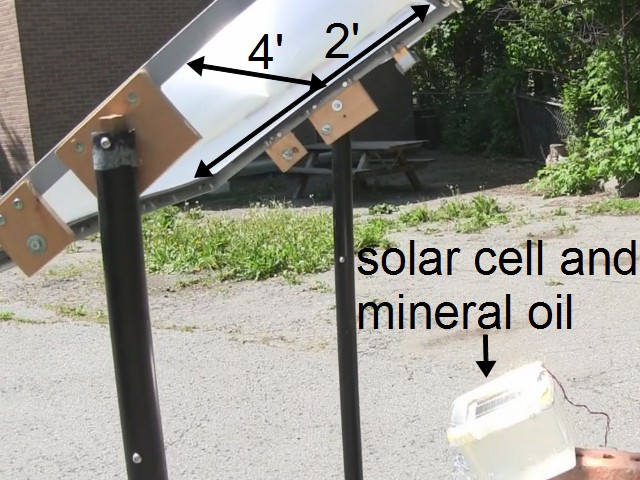
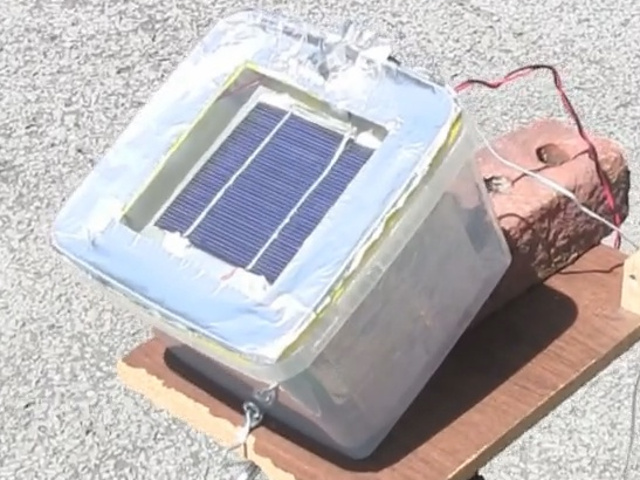
How the solar cell is cooled with mineral oil
The solar cell needs to be kept cool otherwise it would quickly be damaged by the heat generated by the concentrated sunlight, as was demonstrated in test 4 below. This was achieved by immersing it in a container of transparent mineral oil, which is an electrical insulator. The mineral oil would heat up eventually too but it would take longer than the test was run for.
The following diagram and photos show how a container was made that would withstand the heat and yet allow cooling.
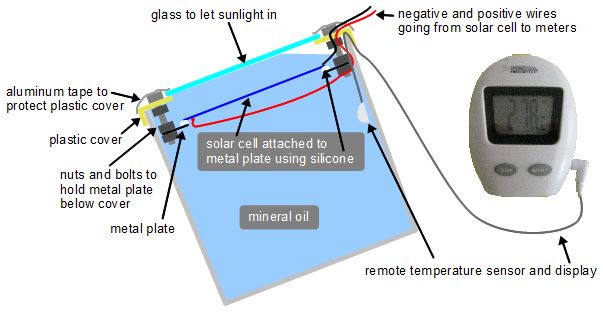
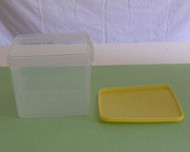
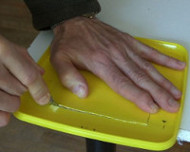
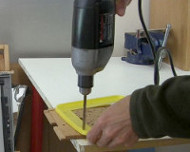
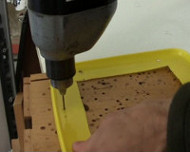
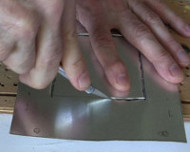
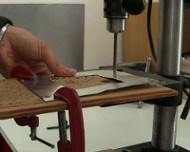
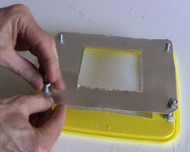

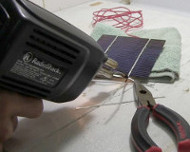
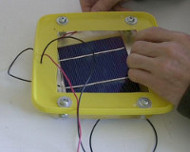
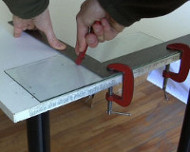

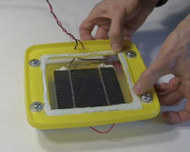
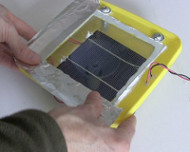

The tests
The following four tests were done, as detailed below.
- Test 1 - Normal sunlight/no cooling oil
- Test 2 - Normal sunlight/cooling oil
- Test 3 - Concentrated sunlight/cooling oil
- Test 4 - Concentrated sunlight/no cooling oil
The diagram below shows how the voltage and current were measured for the solar cell output. It was necessary to measure both at the same time as the tests were being filmed for the video below.
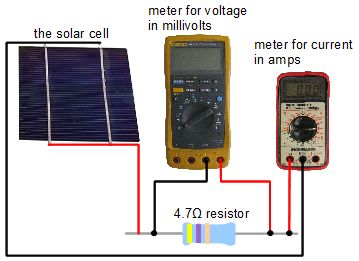
Test 1 - Normal sunlight with no cooling oil
First a test was done essentially with the solar cell just sitting in normal sunlight with no mineral oil for cooling. The results were:
| Voltage | Current | Temperature |
|---|---|---|
| 234 mV | 1.24 A | 39C/102F |
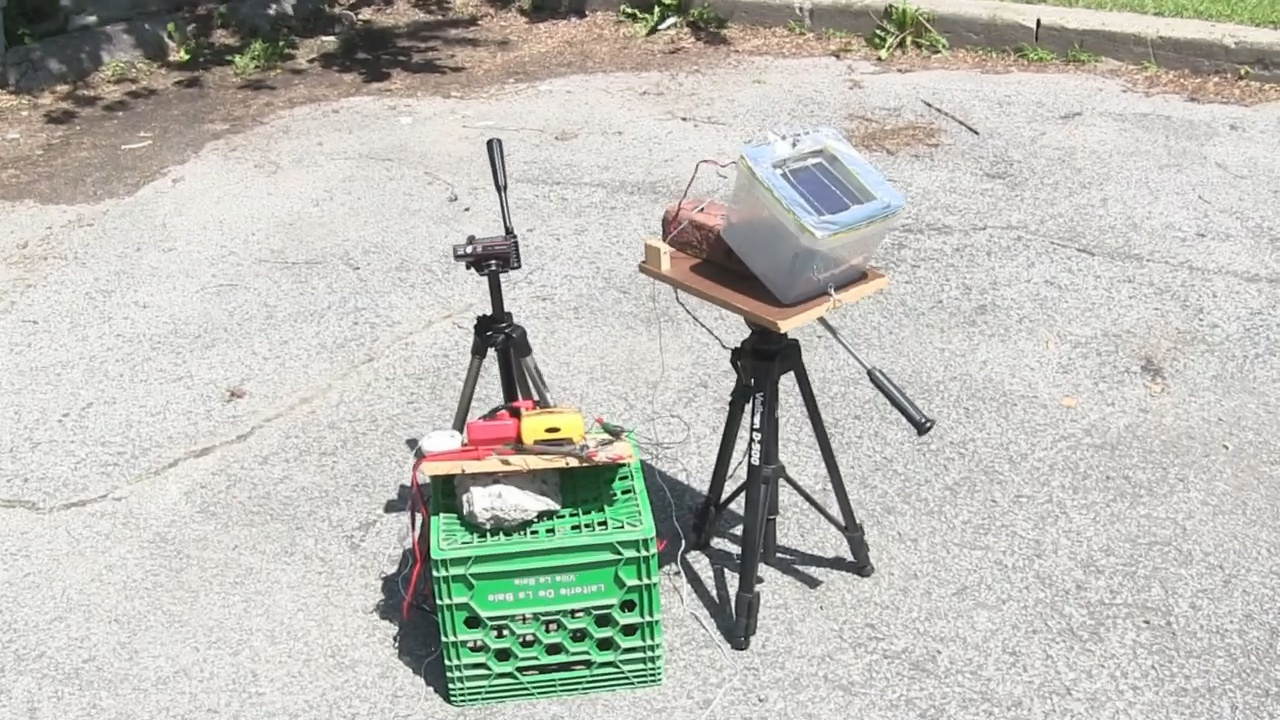
Test 2 - Normal sunlight with cooling oil
Next, mineral oil was added to the container and the test was repeated still with normal sunlight.
| Voltage | Current | Temperature |
|---|---|---|
| 276 mV | 1.5 A | 29C/84F |
Notice that the voltage and current are both higher than in test 1 above. This is likely because the temperature was cooler in the container due to the cooler mineral oil. A cooler solar cell runs more efficiently than a hotter solar cell.
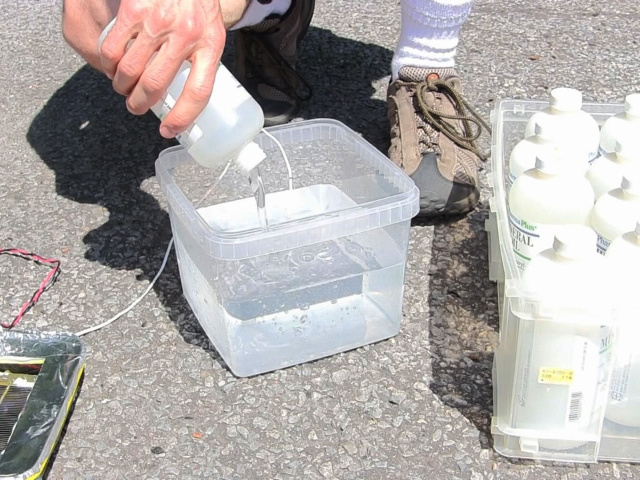
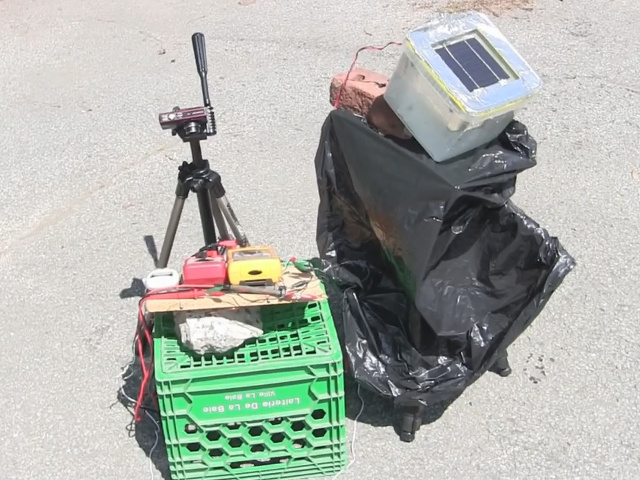
Test 3 - Concentrated sunlight with cooling oil
Finally the large fresnel lens was added to concentrate sunlight onto the solar cell. The solar cell was immersed in mineral oil, keeping it cool for the duration of the test.
| Voltage | Current | Temperature |
|---|---|---|
| 310 mV | 1.4 A | 32C/89F |
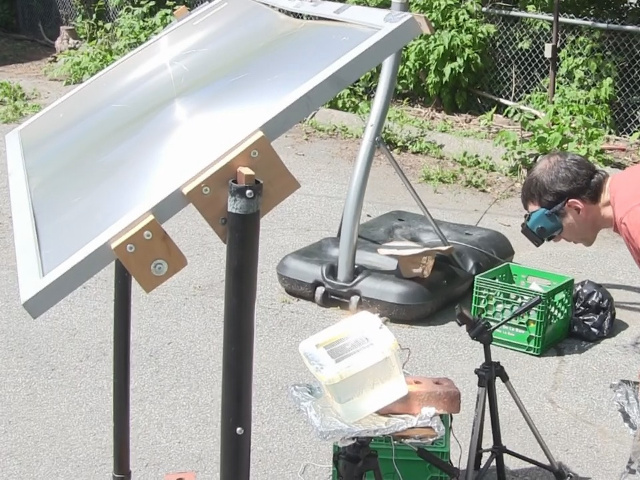
Notice that the temperature was a little higher than test 2, likely due to the mineral oil slowly heating up due to the concentrated sunlight. However, it was still relatively cool. Interestingly, the voltage is much higher but the current is lower. The current is possibly lower compared to test 2's 1.5 amps due to the higher temperature. More on this in the results summary section below.
Test 4 - Concentrated sunlight with no cooling oil
The final test was expected to be descructive to the solar cell. Sure enough the solar cell was fatally damaged. Before the test enough mineral oil was removed from the container to expose the solar cell to air. Soon after the test began, and as the photos below show, the container filled with smoke.
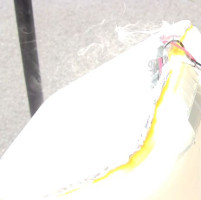
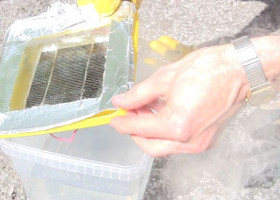
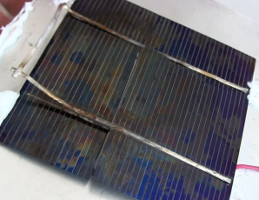
Solar concentration tests results summary
The following is a summary of the test results.
| Test | Voltage | Current | Power | Temperature |
|---|---|---|---|---|
| 1 - Normal sunlight, no cooling oil | 234 mV | 1.24 A | 290 mW | 39C/102F |
| 2 - Normal sunlight, cooling oil | 276 mV | 1.5 A | 414 mW | 29C/84F |
| 3 - Concentrated sunlight, cooling oil | 310 mV | 1.4 A | 434 mW | 32C/89F |
As pointed out above, test 2's output is likely higher than test 1's due to the cooler temperatute. A cooler solar cell runs more efficiently than a hotter solar cell.
Interestingly, the current for test 3, 1.4 amps, with the concentrated sunlight is less than the current for test 2, 1.5 amps, without the concentrated sunlight. This could be due to the higher temperature in test 3. Doing the calculations, there is a 0.03 amps per degree celcius difference between tests 1 and 2. There is the same 0.03 amps per degrees celcius difference between tests 2 and 3 as well. This consistency supports that conclusion.
The voltage is significantly higher for test 3, however, and the power is slightly higher. This means that the concentrated sunlight resulted in higher power output despite a temperature increase.
Video - Concentrated Solar Cell Test with Fresnel Lens
The following is the video I made including the construction of the container, the tests and the analysis.
More topics
Renewable Energy
Getting started
Solar in the city
Solar energy
Solar air heating
Solar pool heating
Solar power
How it works 1
How it works 2
Types of systems
MicroFIT/feed-in tariff
Net metering
Off-grid solar
Off-grid solar inst. p1
Off-grid solar inst. p2
Off-grid solar inst. p3
Off-grid solar inst. p4
RV solar (small system)
Mobile solar system
Solar panel angle
Broken solar panels
Fix broken panel
Pure vs modified sine
DIY solar panel (simple)
DIY copper solar cell
DIY transistor solar cell
Concentrated solar DIY
Mini solar towerArnprior solar farm
Solar cooking
Solar hot water
Wind power
Solar house simulator
Solar in winter issues
Finding true south
Shading/obstacle issues
Lining up with sun
Heat
Insulation
Insulation Table
Heat transfer/loss
Squaring array frame
Science/Electronics
Efficiency & Conservation
Composting
Food
Non-conv. Energy
Non-conv. Propulsion
Space
Stories
